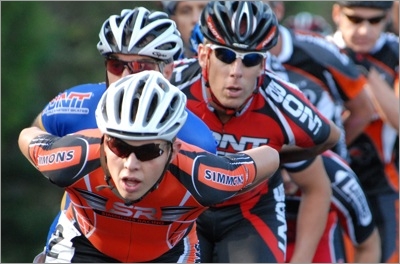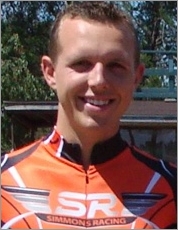 | ||
| ||||||||
By Rob Bell
Rob Bell pulls the lead pack during the 2008 Hayward Inline Challenge. Learning to peak at the right time is an art form. And it's highly individual. One athlete's peak is another's valley. But here's what works for me: Two weeks before a big race, I cut my training volume in half to give my body some extra time to recover. Then, a week before the race, I pick up the pace again, increasing my training volume to about three-quarters of the original. If the race is on Saturday, I take rest days on Wednesday and Thursday; if it's on Sunday, I rest on Thursday and Friday. The day before the race, I do a relatively hard workout. I know this may sound counter-intuitive. But if I skip this hard workout, my legs feel dead on race day. ... I guess my legs are like a pot of chili: always better the second day! Extending Your Peak Some athletes think they can only peak for one day or race of the season. But fortunately, that's not true. A well-executed peak can last for four to six weeks. But extended it requires a "less is more" mindset, which runs counter to the attitude of most athletes. As a result, it's easy to get it wrong. (Which is what I did last season during the three straight weeks of NROC racing.)
Here's the thing to keep in mind: When you are racing every weekend, you don't need to train much during the week. In fact, one midweek workout is enough. You'll be doing plenty of hard work during your marathons. And after each one, you will need a few days to replenish your fluids and recover. By midweek, you should be ready to train. And don't delay because by Thursday, it will be time to rest again, until your next training session, the day before your next race. By this point in the season, it's too late to make any real gains in your conditioning. So don't over do it. It's better to arrive at the starting line 90 percent trained and 100 percent rested than the other way around. Spreading It Out If your big races are spread out over the season, add a rebuilding phase into your schedule. After your first big race, give yourself some time to recover. After a few days of rest, work your way back into shape by repeating one week of Base 1 workouts followed by one week of Base 2 workouts. Then launch into the intensity phase until it's time to taper for your next big race. Getting Help If this all seems too complicated, but you still want to reap the benefits of a periodized training plan, find yourself a coach. A good coach will do all the planning for you. If you are like me and enjoy reading about this stuff, get yourself one of the training bibles by Joe Friel. He will help you design your own training plan. Rob Bells' Periodization Guide ---
Related reading: • Skate Tip of the Week Archive
...
Copyright © 2008 Inline Planet | ||||||||


